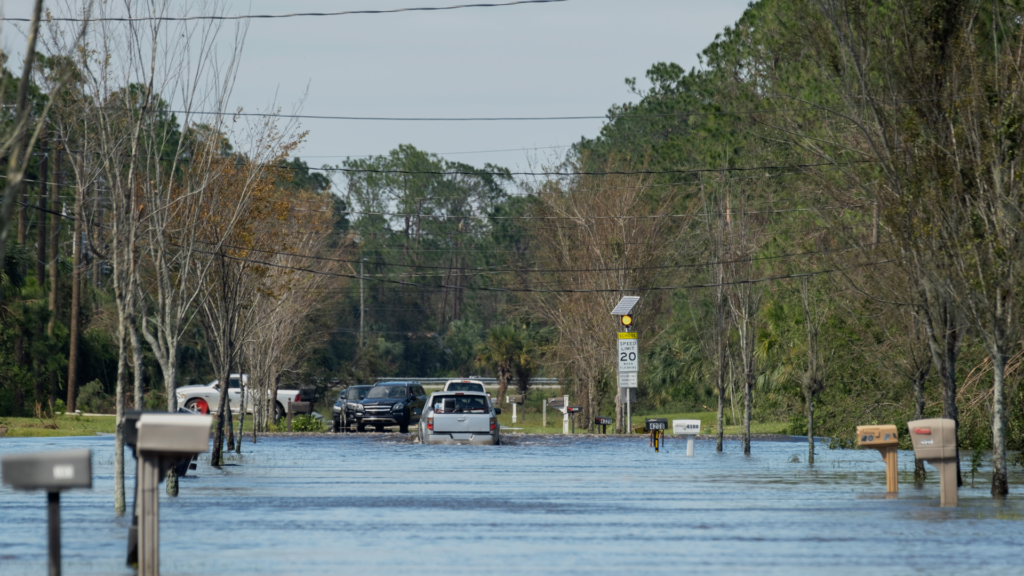When most people think about flooding, they picture overflowing rivers breaching their banks.

However, flood threats extend far beyond waterways. In many growing urban areas, overwhelmed stormwater systems pose a serious and often overlooked risk. As more buildings go up and impervious surfaces like pavement replace green space, municipalities and businesses alike must rethink how they prepare for and manage flood hazards. Below, we’ll explore how urban drainage failures contribute to localized flooding, why it’s a growing concern, and what communities can do to mitigate the risks.
1. Rethinking Flood Risks in Urban Settings
More Pavement, Less Absorption
Modern cities are dominated by roads, parking lots, and other hard surfaces that prevent rainfall from naturally soaking into the ground. During a heavy storm, all that water rushes toward drains and sewers. If these systems weren’t designed or upgraded to handle large volumes of runoff, overflow and street-level flooding become real possibilities.
Denser Populations, Greater Impact
Urban density means thousands—or even millions—of people, homes, and businesses can be affected by a single flooded intersection or waterlogged underpass. What used to be minor inconveniences—puddles or brief impassable roads—can escalate into city-wide gridlock, lost revenue, and serious safety hazards if stormwater infrastructure can’t keep pace with growth.
2. The Underestimated Threat of Stormwater Overload
Aging Infrastructure
Much of the underground pipework in older cities was built decades ago, often based on historical rainfall patterns. Today’s reality—where severe storms may dump inches of rain in an hour—can quickly exceed capacity. Aging pipes, clogged drains, and outdated designs are prime culprits for sudden flooding in places that have never seen it before.
Climate Variability
Beyond urban planning, climate change is also altering weather patterns, leading to more intense and frequent downpours in many regions. Combined with failing or undersized drainage systems, this new normal elevates the risk of flash floods, street flooding, and even backups into homes and commercial properties.
Combined Sewer Overflows
In some older municipalities, stormwater and sewage share the same pipe network. When excessive rainwater overwhelms these systems, untreated wastewater can flow into streets, rivers, and even basements. The environmental and public health consequences can be significant, turning a nuisance flood into a crisis.
3. Implications for Emergency Management
Business Continuity and Economic Impact
When streets flood, employees can’t get to work, deliveries are disrupted, and customers stay home. Even short-term flooding can stall business operations and dent revenue. For essential services—like healthcare facilities—street flooding can hamper ambulance routes or compromise critical infrastructure, increasing the urgency of robust flood preparedness plans.
Public Safety and Health Concerns
Floodwater can carry contaminants, including chemicals, sewage, and debris. People wading through flooded streets face slip-and-fall hazards, electrical risks from submerged power lines, and exposure to harmful bacteria. Emergency managers must be ready to coordinate quick evacuations, shelter operations, and public health communications in these scenarios.
Damage to Critical Infrastructure
Beyond roads, floodwaters can infiltrate electrical substations, public transit systems, and telecommunication hubs. A single flooded substation might trigger an extended power outage impacting hospitals, water treatment plants, and public safety communications. Addressing infrastructure vulnerabilities is an essential part of modern flood readiness.
4. Strategies to Mitigate Urban Flood Risks
a) Modernizing Stormwater Systems
- Infrastructure Upgrades: Replace or expand outdated pipes, and add larger storm drains or retention basins to accommodate heavy rainfall.
- Regular Maintenance: Simple steps like clearing clogged drains and removing debris can drastically reduce localized flooding.
- Green Infrastructure: Use natural solutions like permeable pavement, bioswales, and rain gardens to slow and absorb runoff.
b) Integrated Urban Planning
- Zoning Regulations: Encourage builders to incorporate flood-resistant designs, from raising ground floors to installing backflow prevention valves.
- Open Spaces: Preserving parks, wetlands, and other green areas can act as natural buffers against heavy rainfall.
- Smart Growth: Balance new developments with necessary infrastructure expansions, ensuring that added impervious surfaces won’t overwhelm existing systems.
c) Preparedness and Response
- Flood Modeling and Early Warnings: Real-time data and predictive analytics can alert city officials and residents before water reaches critical levels.
- Community Engagement: Educate the public on how to protect property, from installing sump pumps to clearing yard drains.
- Business Continuity Plans: Encourage businesses to develop flood response protocols, including telework options and supplier diversification.
d) Collaboration Across Stakeholders
- Government Agencies: Municipal authorities must coordinate with regional bodies responsible for water management and flood control.
- Private Sector: Utilities, developers, and property managers should invest in resilient infrastructure and maintain systems diligently.
- Residents: Individual homeowners can reduce runoff by creating permeable surfaces (like gravel driveways) and clearing gutters regularly.
5. A Call to Action: Look Beyond the Riverbanks
As urban areas continue to expand, the threat of flooding from overwhelmed stormwater systems can no longer be dismissed as a minor nuisance. From stalled traffic to contaminated water, localized flooding can escalate into a widespread emergency. By investing in modern infrastructure, embracing green solutions, and tightening coordination among all stakeholders, cities can evolve into more flood-resilient communities—and better protect both lives and livelihoods.
Ready to Strengthen Your Flood Preparedness?
At EmergencyMGT.com, we help businesses and municipalities craft comprehensive flood strategies that look beyond traditional riverbank threats. Get in touch for expert advice on stormwater management, emergency planning, and resilience-building solutions that keep pace with today’s changing climate and urban landscapes. Together, we’ll ensure your organization is ready to stand strong against rising waters—no matter where they originate.

